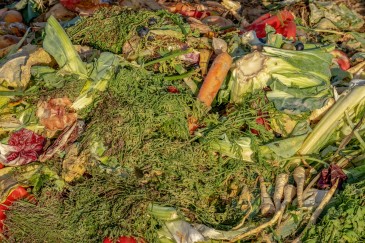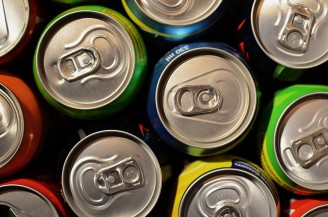Packaging: Rewriting the narrative
Packaging often gets a bad reputation with the environmentally conscious. But is it really the villain it is hyped up to be? Or do we need to change how we think about packaging and sustainability altogether? It is time to ask the latter question and help to shape the narrative around packaging and sustainability. Wider systems thinking and life cycle thinking are the key to a sustainable packaging sector. Tools cemented in the life cycle approach such as Life Cycle Assessment studies provide a more holistic view of the environmental impact of packaging options.
Another proponent of systems thinking and life cycle thinking in the packaging sector, a new report by UK based thinktank Green Alliance calls for a more rounded approach to sustainable packaging and plastic pollution by using a life cycle approach. The report warns that the UK Government’s ban on unnecessary single-use plastics could triple packaging emissions.
Not always the bad guy
Packaging can have a positive environmental impact when used in the right way for the right product. The general narrative around packaging draws attention to the fact that excessive packaging, and unnecessary single-use packaging can have serious environmental consequences. However, the narrative around packaging does not always have to be negative. In fact, packaging can significantly increase the shelf-life of some food products and save waste in the long-term as a direct result. Pre-mix salads packed in nitrogen and cucumbers in shrink wrap are just some of the examples of packaging used to decrease waste rather than increase it.

Research supports wrapping cucumber as it can more than triple the shelf-life when compared to unwrapped cucumber. The 2012 book ‘Why Shrink-wrap a Cucumber? The Complete Guide to Environmental Packaging’ by Stephen Aldridge and Laurel Miller delves into how an extended shelf-life can have a positive environmental impact. From less frequent deliveries needed and related energy costs to significantly less food waste – packaging can have a positive impact that is often overlooked in simpler narratives. An extended shelf life results in less frequent deliveries, less produce that needs to be grown and consequently, lower energy costs for all related processes. It also means that potential food waste is diverted from landfill, which would have otherwise released methane, a greenhouse gas with a Global Warming Potential (GWP) between 28-36 over a 100-year period. In comparison, the more infamous carbon dioxide has a GWP of 1 over any time period. The cucumber example can also be taken as a cautionary tale to warn against only assessing packaging options for direct impacts. A life cycle approach is needed to understand the full story.
Although they are key characters in the narrative around packaging for lower environmental impact overall, food products are not the only ones to benefit from packaging. Packaging benefits such as added protection, less waste, and related energy and cost savings can apply to most products of a fragile nature, especially when shipping is involved.
A life cycle approach
Packaging emerges as the logical choice for cucumbers when all associated factors are considered. But how do we arrive at this point in the story – where we know the best packaging option for a cucumber and the best material to use for the job? How do we choose the most environmentally sound packaging for any product? The Green Alliance report advocates a life cycle approach in order to avoid ‘replacing one single-use material with another’ and therefore, not addressing the broader environmental impacts. Life Cycle Assessment (LCA) studies can guide this process by providing credible data to inform better decision-making in the packaging sector.
At their core, life cycle thinking and systems thinking are about not shifting burdens around. Life cycle tools such as LCA studies enable this by considering a wide range of environmental indicators to ensure that that bigger story isn’t forgotten when measuring environmental impact.
Manufacture for upcycling not downcycling
The commonly used term recycling can be divided into two general categories: upcycling and downcycling. Mostly recycling refers to downcycling, because it leads to a loss of material quality and ends in a lower grade recycled product. Upcycling on the contrary, is the process of material reuse that maintains the original quality of the materials to create something of greater value. Upcycling should be the goal from a sustainability perspective.

Even the simplest of packaging designs often involve multiple materials or material grades. They are then mixed together and downcycled to a product with the quality of the lower grade material. Aluminium is a prime candidate for upcycling with indefinite recyclability and significant energy savings in producing recycled aluminium in comparison to new aluminium (The Verge 2019). Yet, this is not fully utilised in the case of aluminium cans, with a can’s lid and body often comprised of different grades of aluminium which results in a lower grade recycled product. Avoid this loss of quality by manufacturing packaging products for upcycling. Ultimately, this will keep materials in the production cycle without losing any of the material qualities for as long as possible, and away from landfill.
Enabling systems thinking
Environmental assessments of packaging options should consider both the direct and indirect impacts with a life cycle approach. Sustainable packaging requires life cycle thinking and in a wider sense – systems thinking. Systems thinking points to the bigger picture to look at how different factors relate to each other within a system. It focuses on addressing the root cause of a given problem to avoid shifting burdens. From a systems thinking point of view, banning one single-use material is to put a band-aid on a problem that requires a more complex solution. Rewrite the narrative around packaging by incorporating systems thinking and life cycle thinking in the early stages of manufacturing.
Moving forward
There is even more to explore regarding packaging sustainability
- Join our upcoming webinar on packaging sustainability
- Explore our specialised services around packaging
- Ask for a demo of our Packaging LCA and Carbon Footpring Calculator
- Reach out to start a conversation with our LCA and packaging experts
By Barbara Nebel, CEO of thinkstep-anz
This article was first published in NZ Manufacturer magazine, April 2020.